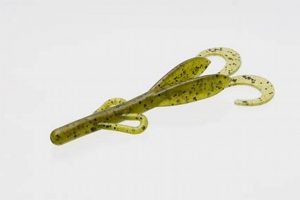The term refers to periods of significant cognitive and developmental advancement experienced by infants at predictable times. These phases are characterized by noticeable changes in behavior, such as increased fussiness, clinginess, and changes in sleep patterns, preceding the acquisition of new skills. For example, an infant may suddenly demand more attention and exhibit difficulty sleeping before demonstrating the ability to roll over or grasp objects with more precision.
Understanding these periods offers caregivers a framework for interpreting changes in an infant’s behavior and anticipating developmental milestones. This awareness can promote responsive caregiving, reducing parental stress and potentially strengthening the parent-child bond. Historically, recognizing patterns in infant development has aided in creating age-appropriate activities and fostering a supportive environment for growth.
The following sections will delve into the typical timeline of these cognitive advancements, explore the specific behavioral changes associated with each phase, and provide practical strategies for supporting infants through these periods of development.
The following recommendations are intended to assist caregivers in effectively supporting infants during times of heightened cognitive and developmental change.
Tip 1: Recognize the Signs. Changes in sleeping habits, increased fussiness, and a heightened need for physical contact often signal the onset of a period of rapid development. Understanding these indicators allows for proactive adjustments in caregiving strategies.
Tip 2: Provide a Consistent Routine. Maintaining a predictable daily schedule can offer a sense of security and stability during times of significant change. This includes consistent feeding times, nap times, and bedtime rituals.
Tip 3: Offer Enhanced Sensory Stimulation. Engage the infant with age-appropriate toys, textures, and visual stimuli. Introducing new sensory experiences can support the integration of new information and encourage exploration.
Tip 4: Respond to Cues Promptly. Addressing the infant’s needs for comfort and reassurance without delay fosters a sense of trust and security, which is particularly important during these sensitive periods.
Tip 5: Practice Patience. Periods of rapid development can be challenging for both the infant and caregiver. Maintaining a calm and patient demeanor can contribute to a more positive experience.
Tip 6: Encourage Exploration. Allow the infant to explore new environments and objects under safe supervision. This encourages the development of new skills and fosters independence.
Understanding and responding to the distinct phases of infant development can facilitate optimal cognitive and emotional growth. By implementing these strategies, caregivers can effectively support infants during times of rapid advancement.
The subsequent section will address common challenges and misconceptions associated with these developmental phases.
1. Predictable periods
The concept of “predictable periods” forms the foundational basis for understanding phases of rapid cognitive and physical development observed in infants, commonly referred to as “baby leaps by week”. The identification of these periods allows for a structured approach to anticipate and support an infant’s developmental trajectory.
- Standardized Timelines
Research indicates that these periods occur at relatively predictable intervals, often correlated with weeks or months of age. While individual variations exist, the general timing of these phases remains consistent across a significant portion of the population. For instance, the first developmental phase typically occurs around 5 weeks of age. This predictability enables caregivers to anticipate potential behavioral changes and developmental milestones.
- Neurological Underpinnings
These predictable periods are often linked to specific neurological changes occurring in the infant’s brain. Synaptic connections are strengthened and new neural pathways are formed, leading to enhanced cognitive capabilities. Understanding these neurological underpinnings provides a biological basis for the observed behavioral shifts.
- Behavioral Manifestations
The predictability also extends to the types of behavioral changes observed. Increased fussiness, heightened clinginess, and alterations in sleeping and eating patterns are common indicators. Recognizing these predictable behavioral manifestations allows caregivers to differentiate between typical developmental progress and potential underlying issues.
- Intervention Opportunities
Because of the predictable nature of these periods, intervention strategies can be proactively implemented. Caregivers can prepare for the increased demands and provide enhanced support to facilitate the infant’s adaptation to new cognitive and physical abilities. This proactive approach optimizes the developmental process.
In conclusion, the predictability of these developmental phases is not merely an observation but a crucial element for proactive caregiving and fostering optimal infant development. The predictable nature permits anticipation, preparation, and ultimately, more effective support during critical periods of growth.
2. Cognitive advancement
Periods of accelerated cognitive advancement are intrinsically linked to the concept of infant developmental phases, commonly characterized by observable behavioral shifts during specific weeks. This advancement represents a period of heightened neuronal activity and synaptic strengthening, fundamentally altering the infant’s perception and interaction with the environment. These leaps involve the development of new sensory processing abilities, improved motor skills, and the establishment of early problem-solving capabilities. For example, the ability to recognize familiar faces, grasp objects intentionally, or understand simple cause-and-effect relationships reflects such cognitive growth. This advancement is not a continuous process but occurs in discrete stages, separated by periods of relative stability. The identification of these periods allows caregivers to proactively support the infant’s learning and adaptation to new cognitive functions.
The specific cognitive skills acquired during each of these rapid developmental periods vary, but they all contribute to the infant’s expanding understanding of the world. As an illustration, during one phase, an infant may develop an enhanced understanding of spatial relationships, enabling them to reach for objects more accurately or to anticipate the movement of objects in their environment. This skill then builds upon previously acquired abilities, facilitating further cognitive development in subsequent phases. The practical significance of recognizing these cognitive advancements lies in the ability to provide tailored stimulation and interaction. For instance, presenting an infant with age-appropriate toys that encourage exploration and problem-solving can enhance the cognitive gains made during these periods.
In summary, cognitive advancement is a fundamental element of these infant developmental phases, driving observable behavioral changes and shaping the infant’s evolving cognitive landscape. Understanding the specific cognitive skills being acquired during each phase allows for targeted support and stimulation, optimizing the infant’s developmental trajectory. However, challenges remain in precisely measuring and quantifying these cognitive changes, and further research is needed to fully elucidate the underlying neurological mechanisms. Recognizing the broader theme, cognitive advancement in infancy lays the foundation for future cognitive abilities and adaptive behaviors throughout the lifespan.
3. Behavioral changes
Observable alterations in an infant’s behavior are integral indicators of developmental progression during distinct phases often associated with specific weeks. These shifts reflect underlying cognitive and neurological restructuring, signaling the acquisition of new skills and adaptations to a changing perceptual landscape.
- Increased Irritability
A common manifestation is a heightened state of fussiness and irritability. Infants may exhibit increased crying, difficulty in being soothed, and a reduced tolerance for environmental stimuli. This behavior likely stems from the neurological reorganization and the infant’s struggle to adapt to new sensory input and cognitive processing demands. For instance, an infant who previously tolerated being alone may now exhibit distress when separated from a caregiver.
- Altered Sleep Patterns
Disruptions in sleep cycles are frequently observed. Infants may experience difficulty falling asleep, more frequent awakenings during the night, or changes in the duration of naps. These alterations can be attributed to the cognitive processing occurring during sleep, as the brain consolidates new information and establishes neural connections. A previously consistent sleeper may begin waking multiple times per night, demonstrating the brain’s activity.
- Changes in Appetite
Variations in feeding patterns, including increased or decreased appetite, can occur. These shifts may be linked to the infant’s evolving metabolic needs and the brain’s developing control over hunger and satiety cues. An infant may suddenly demand more frequent feedings or, conversely, exhibit a decreased interest in nursing or bottle-feeding.
- Heightened Clinginess
An increased need for physical contact and proximity to caregivers is frequently observed. Infants may exhibit a heightened desire to be held, carried, or in close physical contact. This clinginess provides a sense of security and comfort during a period of significant cognitive and perceptual change, acting as a means of emotional regulation. An infant may resist being put down or exhibit distress when a caregiver leaves the room.
These behavioral changes, when viewed within the context of expected developmental timelines, provide valuable insights into an infant’s cognitive and neurological progress. Understanding these shifts allows caregivers to provide appropriate support and adapt their caregiving strategies to meet the infant’s evolving needs during these critical phases. These behavioural alterations can also indicate an underlying medical issue, underscoring the importance of differentiating typical progress from pathological signs.
4. New skill acquisition
The attainment of novel skills constitutes a cardinal feature of the periods of rapid development experienced by infants. These advancements, frequently correlated with specific weeks of age, are a direct result of underlying neurological changes and cognitive restructuring. Skill acquisition manifests across various domains, including motor, cognitive, social, and language development. Motor skill acquisition examples include an infant learning to roll over, sit up independently, crawl, or eventually walk. Cognitive skills encompass object permanence, cause-and-effect understanding, and problem-solving abilities. Social skills involve recognizing faces, responding to social cues, and engaging in reciprocal interactions. Language acquisition includes babbling, understanding simple words, and ultimately, speaking.
The connection between these developmental phases and skill acquisition is causal; neurological changes drive cognitive advancements, which then facilitate the emergence of new skills. The acquisition of a new skill, in turn, signals the completion of a particular developmental phase and prepares the infant for subsequent advancements. The practical significance of understanding this connection lies in a caregiver’s ability to anticipate and support an infant’s developmental progress. For instance, recognizing that an infant is in a phase associated with the development of fine motor skills enables caregivers to provide opportunities for the infant to grasp and manipulate objects, thus facilitating skill development. Early intervention strategies are built around these insights, to maximize developmental gains.
In summary, the acquisition of new skills is an indispensable component of the phases of accelerated infant development, resulting from cognitive advancements and neurological transformations. Understanding this interconnection allows caregivers to anticipate upcoming milestones, provide tailored support, and optimize the infant’s developmental trajectory. Further research on the specific neurological mechanisms underpinning skill acquisition during these periods is warranted. Recognizing and promoting new skills during infancy is paramount for laying a strong foundation for subsequent cognitive and adaptive functioning.
5. Caregiver awareness
Caregiver awareness functions as a crucial element in effectively navigating phases of accelerated infant development. Comprehending the predictable changes in behavior and cognitive abilities associated with these periods empowers caregivers to provide responsive and supportive care.
- Early Identification of Leaps
Awareness enables caregivers to recognize the initial indicators of a developmental phase. Changes in sleep patterns, increased fussiness, or heightened clinginess can signal the onset of a new leap. Early identification allows for proactive adjustments in caregiving strategies, potentially mitigating stress for both infant and caregiver. For example, a caregiver aware of the signs of an upcoming leap may anticipate increased nighttime awakenings and adjust bedtime routines accordingly.
- Responsive Support Strategies
Knowledge of typical behaviors associated with each phase facilitates the implementation of appropriate support strategies. Understanding that an infant is experiencing a phase of heightened sensory awareness might prompt caregivers to introduce new textures or age-appropriate toys. Conversely, awareness that a phase involves cognitive integration may lead to providing a calmer environment to minimize overstimulation.
- Realistic Expectations and Reduced Stress
Awareness promotes realistic expectations regarding an infant’s behavior and abilities. Understanding that increased clinginess is a temporary phase associated with cognitive advancement can reduce caregiver frustration and promote patience. This, in turn, fosters a more positive and supportive caregiving environment. Knowing that developmental regression is often a sign of a new leap can avoid premature concern.
- Facilitation of Skill Development
Caregiver awareness facilitates the active support of new skill development. Recognizing that an infant is entering a phase of motor skill development might encourage caregivers to provide opportunities for the infant to practice rolling, sitting, or crawling. This active support can optimize the infant’s developmental trajectory and foster a sense of competence. Introducing age-appropriate activities to support skill attainment.
In conclusion, heightened awareness of predictable phases of infant development empowers caregivers to provide timely, responsive, and supportive care. By recognizing the signs of developmental periods, implementing appropriate support strategies, maintaining realistic expectations, and facilitating skill development, caregivers contribute significantly to optimal cognitive and emotional outcomes. Caregiver awareness, therefore, is essential for effective parenting during these critical periods of infant development.
6. Infant support
Infant support, encompassing emotional, physical, and cognitive dimensions, is a critical factor influencing an infant’s development during phases of rapid change commonly associated with specific weeks of age. The quality and consistency of infant support directly impact the infant’s ability to adapt to new cognitive and sensory experiences associated with these periods.
- Emotional Regulation Assistance
Infants experiencing developmental phases often exhibit increased irritability and difficulty self-soothing. Supportive caregiving involves providing comfort and reassurance during these periods of heightened emotional distress. For example, a caregiver may respond to an infant’s increased crying with gentle rocking, soothing vocalizations, or physical contact. This emotional regulation assistance can mitigate the negative impact of developmental stress and foster a secure attachment bond.
- Facilitation of Exploration and Learning
Supportive environments provide opportunities for infants to explore new sensory experiences and develop emerging skills. Caregivers may offer age-appropriate toys, create safe spaces for movement, and engage in interactive play. For instance, introducing a textured ball to an infant during a phase of heightened sensory awareness can stimulate tactile exploration and facilitate fine motor skill development. Scaffolding learning, providing guidance without overwhelming the child, is also critical.
- Maintenance of Consistent Routines
Establishing predictable daily routines provides infants with a sense of security and stability during periods of rapid change. Consistent feeding times, nap schedules, and bedtime rituals can reduce anxiety and promote restful sleep. Even amidst developmental shifts, a predictable structure offers a familiar framework, enabling the infant to navigate new challenges with greater confidence.
- Attuned Communication and Responsiveness
Supportive caregivers demonstrate attunement to an infant’s cues and respond promptly to their needs. Recognizing subtle signals of hunger, discomfort, or fatigue allows for timely interventions that promote well-being. Responding to babbling sounds or engaging in reciprocal gaze can foster language development and social interaction. This attuned communication reinforces the infant’s sense of being understood and valued.
The interplay between infant support and these developmental phases is bidirectional. Quality support enables infants to adapt more effectively to the cognitive and sensory challenges presented by these periods. Conversely, the behavioral changes associated with these phases necessitate adaptive caregiving strategies. Understanding the connection allows caregivers to provide tailored support that optimizes an infant’s developmental trajectory. Lack of support could potentially negatively impact the child development.
Frequently Asked Questions
The following section addresses common inquiries regarding the predictable periods of rapid cognitive and physical development observed in infants. The aim is to clarify misconceptions and provide evidence-based information.
Question 1: Are developmental phases precisely predictable to the week?
While these phases occur within a general timeframe correlated with weeks of age, individual variation exists. The reported weeks serve as guidelines, and deviations of one to two weeks are considered normal. Focusing on the behavioral changes rather than adhering strictly to a calendar is recommended.
Question 2: Do all infants experience these phases in the same manner?
The presentation and intensity of these phases vary among infants. Some may exhibit pronounced behavioral changes, while others experience more subtle shifts. Temperament, environmental factors, and underlying health conditions can influence the manifestation of these phases.
Question 3: What if an infant does not exhibit the expected behavioral changes during a particular phase?
The absence of expected behavioral changes does not necessarily indicate a developmental problem. Development proceeds at an individual pace. However, if concerns arise, consulting a pediatrician or developmental specialist is advisable. Monitoring overall progress and addressing specific concerns is crucial.
Question 4: Can these phases be accelerated or skipped altogether?
While supportive caregiving can optimize development, these phases cannot be artificially accelerated or skipped. Development follows a neurologically determined sequence. Attempting to force an infant to progress prematurely may be detrimental.
Question 5: Are increased fussiness and sleep disturbances solely attributable to developmental phases?
Fussiness and sleep disturbances can stem from various causes, including illness, teething, environmental factors, or changes in routine. Ruling out other potential causes is essential before attributing these symptoms solely to a developmental phase. Pediatric consultation may be necessary.
Question 6: Is there scientific evidence supporting the existence of these phases?
Research on infant development has identified patterns of cognitive and behavioral change correlated with specific age ranges. While the precise mechanisms underlying these phases are still under investigation, empirical evidence supports the existence of predictable periods of rapid development.
Understanding these key points promotes a more informed and realistic perspective on infant development. Recognizing the individual variability and potential influences on these phases is essential for effective and responsive caregiving.
The following section will explore practical strategies for addressing common challenges associated with these developmental phases.
The Significance of Understanding Infant Developmental Phases
The exploration of “baby leaps by week” has underscored the patterned nature of infant cognitive and physical development. Identifying these phases, recognizing associated behavioral changes, and understanding the influence of caregiver support are crucial elements in promoting optimal developmental outcomes. The information presented provides a framework for interpreting infant behavior and anticipating skill acquisition.
Continued research into the neurological underpinnings of these developmental phases is warranted to further refine our understanding and inform evidence-based caregiving practices. A commitment to responsive and informed caregiving, grounded in an understanding of infant developmental trajectories, remains essential for fostering healthy development and well-being.







